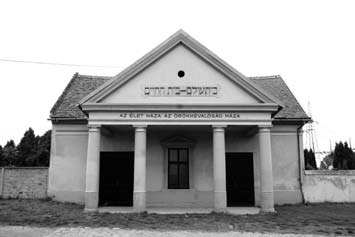Until today, only two historians Istvan Ivanji and Dusan Jelic dealt with the past of the Subotica Jews. About the history of the Jewish cemetery Ivanji in his “History of Subotica” gives only three sentences, which read: “The Jewish cemetery was near the Hall of the Hall. When the cemetery was erected in 1829, it was not moved from the old town. Over time it has been expanded. ” Dusan Jelić, literally transcribes Ivanjija, only adds that since the beginning of the immigration of the Jews, the cemetery was in present place, but this claim does not prove anything.
Studies have shown that the oldest tombstones come from the middle of the last century. This information is supported by the article of the newspaper “Sombat” printed in 1925, which says that the cemetery was founded during the presidency of Adolf Gaiger in the 1950s, but the source of the information is not even cited in this case.
Where the Jews were burying earlier, only oral sources tell us. According to them, the old Jewish cemetery was behind the “Dudova Forest” near the tennis club “Spartak” and a small number of eyewitnesses still remember tombstones with Hebrew inscriptions scattered around the courtyards. The location can be accepted as a place to bury because it is the highest topographic point within today’s city, at the edge of the part of the settlements that inhabited the Jews on the very shore of the swamp which was called the “Big ass”.
Today’s cemetery is located on the second, western shore of the Big Rite. Sometimes the cemetery was behind the city shunts, today it is already wired by housing blocks from all sides. By dates engraved on tombstones and stylistic characteristics, it’s easy
can be followed by the extension of the cemetery. Rectangular is a base, 1 hectare and 14 acres. The oldest part of the cemetery is in the north-east corner. Even today, there is a former ditch, behind which the children’s cemetery spread. In this part of the cemetery about half of the gravestones are missing.
The cemetery is expanding after the Austro-Hungarian settlement, in 1867 in the southern and western directions. Today’s surface gets between the two world wars.
From the earliest times, the Jews marked the grave of the deceased by placing a bunch of stones on the grave, marking it with a visible sign or columns. For a year, the tomb was marked by the erection of a monument, a simple stone slab without any stylistic features. According to the shape of older tombstones, old Hebrew inscriptions, according to relief decoration and symbols, tombstones in the Jewish cemetery are the most prominent example of a reflection of pure ethnic and religious affiliation with a certain typified form.
In the Jewish cemetery in Subotica, except in the area where the oldest excavations were made, the study of tombstones indicates that through the 19th century, due to the emancipation of Jews and their involvement in various types of social activities, due to assimilation tendencies, industrialization and other factors, there is a tendency to prove that a new equal position. This was done in the area of artistic activities by raising lavish tombstones. The foreign influences in the European diaspora will lead to the abandonment of the characteristic forms of the Jewish tombstone, in that period of classicism, the ruling neo-tilde and secession.
In the period between the two wars, when the economic stagnation of the city comes, it comes parallel to the simplification and impoverishment of forms of gravestones.
In the oldest part of the Jewish cemetery there is a monument to the Jewish victims of the Revolution of 1848. The common grave is covered with bricks, with a layer of roughly tanned stone blocks carrying a pyramidal obelisk, with an unreadable text in the Hungarian and Hebrew languages.
In the Second World War in the German death camps, almost the whole of the Subotica Jewish community disappears:
SÁTORALJAÚJHELY, EAST FRONT, BOR-CSERVENKA, HIDEGSÉG, THERESIENSTADT, BERGEN BELSEN, BUCHENWALD, AUSCHWITZ, DACHAU, MATCHAUSEN, STASSHOF, BÁCSALMÁS, BUDAPEST, STUTTHOF
The memorial complex Tired Jews is located at the corner of the Jewish cemetery at the bottom of the plot, to which the alley leads. It consists of monuments, 10 individual and one common tombs. The author of the memorial complex is Lajčo Dajč, and was erected in 1948.
It was made in the form of an obelisk, a characteristic form of the monuments raised immediately after the Second World War. It is made in artificial stone, marble marble and black granite.
After this period, the number of burials is insignificant.
JEWISH CEMETERY


0 comments on “JEWISH CEMETERY”